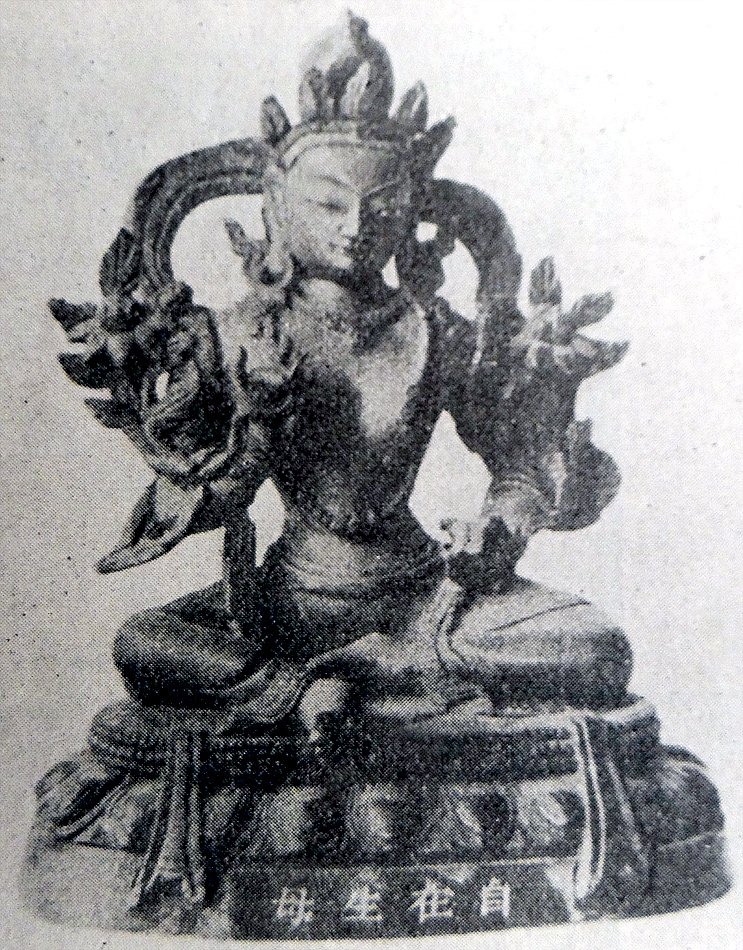The Indian Buddhist Iconography
by Benoytosh Bhattachacharyya | 1958 | 51,392 words | ISBN-10: 8173053138 | ISBN-13: 9788173053139
This page contains an iconography image of Twelve Vashita Goddesses: Upapattivaishta and represents figure 221 of the book Indian Buddhist Iconography, based on extracts of the Sadhanamala English translation. These plates and illustrations represent either photographs of sculptures or line-drawing reproductions of paintings or other representations of Buddhist artwork.
Figure 221 - Twelve Vaśitā Goddesses: Upapattivaiśtā

Fig. 221: Upapattivaiśtā
(Peiping)
The Vaśitās according to Buddhism, are the controls or disciplines which lead to the spiritual regeneration of its followers. The Vajrayānists recognized twelve Vaśitās, each with a special name and conceived them in the form of deities with heads, arms, weapons and special symbols. These Vaśitās are collectively taken to be the spiritual daughters of the Dhyāni Buddha Amitābha. Below is given a description of the twelve Vaśitā goddesses [viz., Upapattivaiśtā, Upapatti-vaiśtā] in the same order in which they appear in the Dharmadhātuvāgīśvara-maṇḍala of the Niṣpannayogāvalī. The description of the Vaśitā goddesses is not found in the existing original literature and thus it is of unusual interest. Their iconographic interest becomes all the more attractive since in China there are statuettes in metal which correctly represent the Vaśitā goddesses. Statues of these are not found anywhere in India, but their statuettes in the Chinese collection of Buddhist deities at Peiping are illustrated in the Two Lamaistic Pantheons of W. E. Clark.
5. Upapattivaiśtā:
Colour: mixed;
Arms: two;
Symbol: creepers.
The fifth goddess in the Vaśitā series is Upapattivaiśtā who is described in the text as follows: “ Upapattivaiśtā is of variegated colour and holds in her left hand various kinds of creepers of variegated colour”. The right hand displays the lotus as usual. Her statue is found in China. Fig. 221 illustrates this Chinese specimen.
